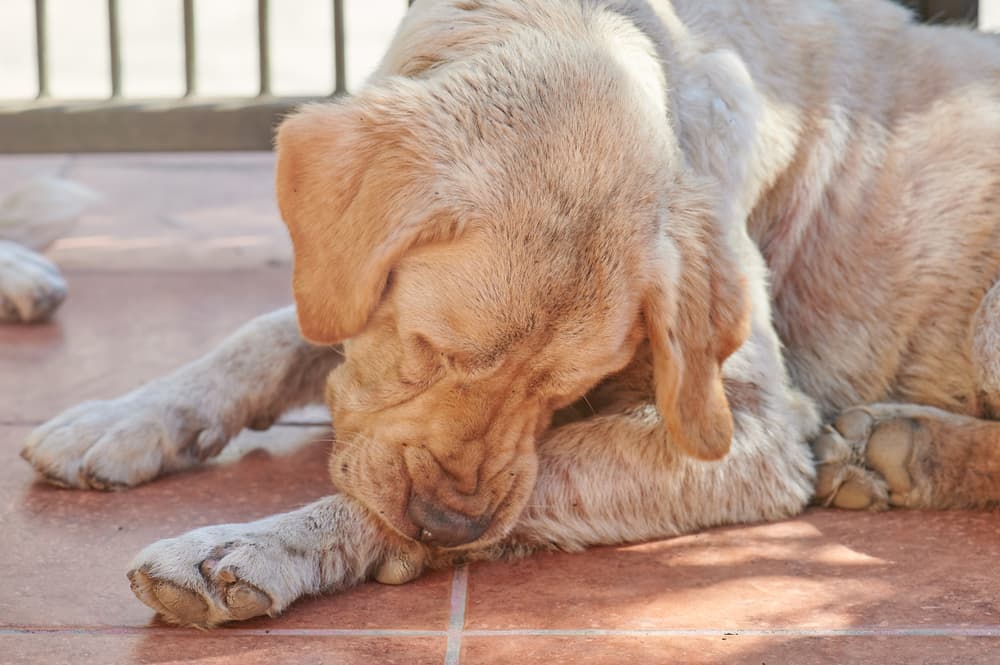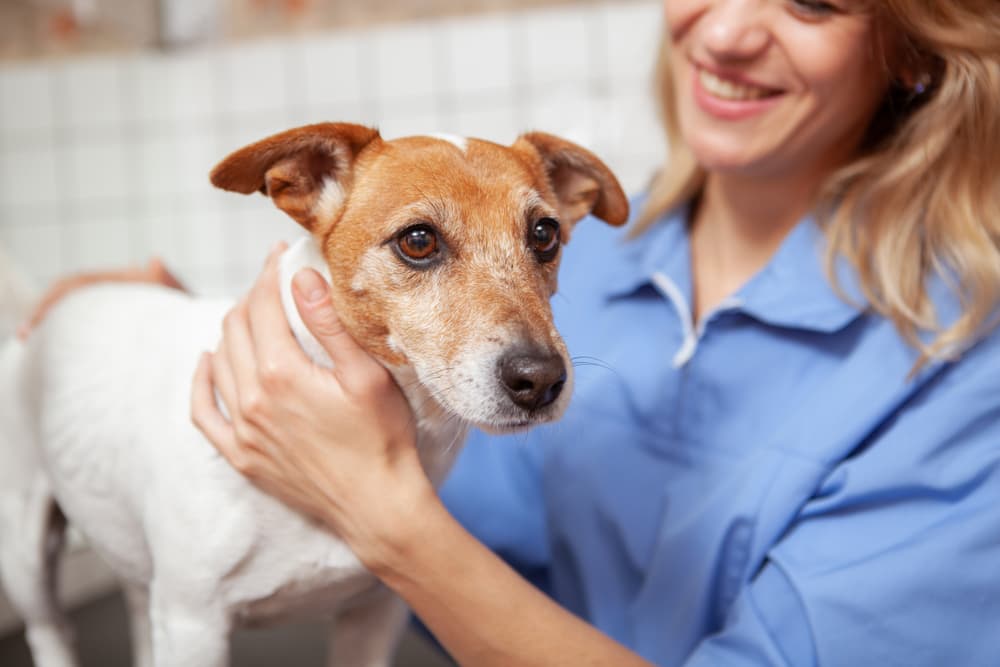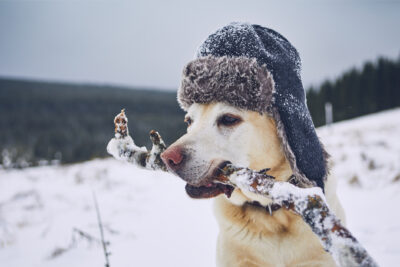Histiocytoma in Dogs

Overview
- A histiocytoma is a type of skin tumor that affects young dogs.
- Any breed or crossbreed can get histiocytomas, but it appears that Boxers and Dachshunds are more prone to getting histiocytomas.
- The most common symptom is a small, round lump that’s typically less than half an inch in diameter.
- If you suspect your dog has a histiocytoma, it’s important to visit the veterinarian. They look very similar to a more serious tumor, so it’s important for vets to take a look to help to distinguish the two.
- Histiocytomas usually go away on their own and do not need treating.
A histiocytoma is a relatively common skin tumor affecting approximately 3 in every 1,000 dogs (1). It’s unsightly but thankfully benign and will usually regress on its own after a few weeks. However, histiocytomas can look similar to a more serious tumor, so get any new lump or bump you notice on your dog checked out by a veterinarian.
Here’s everything you need to know about histiocytomas in dogs, from causes and symptoms to diagnosis and treatment.
What is a Histiocytoma?

Histiocytoma in dogs is a type of skin tumor. You may hear it referred to as a cutaneous histiocytoma, too. It’s a relatively benign skin tumor that affects young dogs (usually less than 4 years old). It can sometimes be confused for other types of lumps on dogs.
Histiocytomas appear on the surface of the skin as a pink-red, hairless lump. They’re round and solitary—that is, there are no other nearby lumps. They usually appear on the head or ears, although it’s possible for them to appear anywhere on the body. Histiocytomas can appear on your dog’s leg, your dog’s lip, or your dog’s nose. Histiocytomas on the ear flaps are the most common form.
On the whole, histiocytomas in dogs don’t need treatment, but histiocytomas on dog paws can be irritating, and they sometimes need surgical removal.
Types of Dog Histiocytomas
There are a few different types of dog histiocytomas. While the benign cutaneous histiocytoma is the most common type by far, there are some more serious types of histiocytomas and some other conditions that are related to histiocytes, a type of immune cell that lives in the skin. These include:
Ulcerated histiocytoma: Like any skin lump, histiocytomas can ulcerate. Ulcerated histiocytomas often need surgical removal to prevent infection.
Malignant histiocytoma: In very rare, exceptional cases, histiocytomas can become malignant and metastasize to a local lymph node.
Localized histiocytic sarcoma: A rare condition that causes swelling in the limbs and lameness. It most often affects Bernese Mountain Dogs, Golden Retrievers, Flat-Coated Retrievers, and Rottweilers.
Disseminated histiocytic sarcoma (malignant histiocytosis): A rare but severe condition that usually affects Bernese Mountain Dogs. It affects all of the organs and causes lethargy, weight loss, and appetite loss. It is extremely serious and often fatal, but shouldn’t be confused with the normal histiocytoma as experienced by the vast majority of dogs.
Malignant fibrous histiocytoma (MFH): A type of soft tissue sarcoma (tumor) that affects Flat-Coated Retrievers, Rottweilers, and Golden Retrievers more than other breeds. It’s usually found as a lump under the skin and on testing is found to be a malignant fibrous histiocytoma. They are locally invasive and can metastasize, so surgical removal is recommended. However, the World Health Organization no longer considers MFH to be a separate disease and it looks like these tumors in dogs are also being reclassified now that we have better diagnostic techniques available.
What Causes Histiocytoma in Dogs?

Histiocytomas appear when histiocytes grow rapidly and produce more histiocytes, causing a lump to form. While some have suggested hat ticks, viruses, or infections spark the immune system to do this, no cause for histiocytomas has been found. Histiocytomas also cannot spread between dogs.
Any breed or crossbreed can get histiocytomas, but it appears that Boxers and Dachshunds are more prone to getting histiocytomas, and that they’re more common in purebred dogs in general.
Histiocytoma in Dogs: Symptoms

The most common symptom of a histiocytoma is a small, single round lump that’s typically less than half an inch in diameter. It’s usually pink-red, raised, and hairless, like a red mole on a dog. The most common place for these lumps is the face and ears, although they can be anywhere. They are rarely painful but sometimes irritating, especially when they’re on the feet. Histiocytomas are sometimes called button tumors on dogs, as well.
Other symptoms of histiocytomas in dogs may include:
- Licking and biting at the lump (if irritating)
- Limping (if the lump is between toes or on base of foot)
Diagnosing Canine Histiocytomas

What should you do if you find a pink bump on your dog? If you suspect your dog has a histiocytoma, it’s important to visit the veterinarian. Although histiocytomas are almost always benign, they look very similar to a more serious skin cancer called a mast cell tumor, so it’s important for vets to take a look to help to distinguish the two.
Your veterinarian will look closely at the lump and feel it to see whether it’s painful or bothers the dog, as well as checking over your dog generally. They will likely recommend further testing to help to differentiate the histiocytoma from a mast cell tumor.
Finding a lump or bump on your dog can be very worrisome. And the last thing pet parents need is more worries about how to pay for testing or potential treatments. That’s where a pet health insurance plan can help ease your mind. Depending on your policy, everything from the cost of office visits to testing, treatment, and surgery could be fully or partially covered.
Biopsy of diagnosing a histiocytoma
One easy way to get a diagnosis is by taking a needle biopsy, also called a fine needle aspirate. This involves sticking a needle into the lump and wiggling it around to get some cells for analysis. In many dogs, sedation isn’t necessary for this procedure. Your veterinarian or a lab specialist will assess the appearance of the cells and the type of cell—a lot of histiocytes usually means a histiocytoma, while a lot of mast cells would indicate a mast cell tumor. This method of biopsy doesn’t always provide an answer. Sometimes there aren’t enough cells, they’re too close together on the slides, or they are too damaged to provide a clear answer.
Another option is an excisional biopsy. This involves surgically removing the lump and sending it off to a laboratory for analysis. They will slice the lump into very thin sections for viewing under a microscope (called histology). This method generally costs more, and your dog would need an anesthetic, but it can be useful in some situations. There are no mistakes with histology, as the whole lump is available for viewing, so your veterinarian should definitely get an answer.
How to Treat Histiocytoma in Dogs

Histiocytoma in dogs usually spontaneously regress, meaning they go away on their own and do not need treating. However, treatment is sometimes necessary. Ulcerated histiocytomas can quickly become infected, and antibiotics may be needed. Additionally, histiocytomas that become problematic due to their location often require surgical removal despite being benign.
Medications for Dog Histiocytomas
Most histiocytomas will clear up on their own, but sometimes medications may be necessary. Your dog may need antibiotics for an infected histiocytoma. Your vet may also prescribe cleaning solutions containing chlorhexidine or iodine for ulcerated histiocytomas in order to help prevent infection.
Home Treatments for Histiocytomas
Since histiocytomas usually go away of their own accord after a month or two, they rarely need any home treatment. Remember, you should first consult your veterinarian, as it’s easy to confuse these benign tumors with more dangerous types.
Once you receive a histiocytoma diagnosis using cytology, you can give your dog some simple home care while waiting for the tumor to regress. Keeping the tumor clean with salt-water bathing may help to reduce the risk of infection. You should also prevent your dog from licking at, biting, or interfering with the lump in any way, as this will make surgery more likely to be necessary.
General Cost of Treatment for a Dog Histiocytoma
For a simple histiocytoma case, your dog will need an exam and cytology. This usually costs in the region of $100-$200.
For a more complex case, for instance if the histiocytoma ulcerates or becomes infected, surgery is likely to be necessary. This is likely to cost in the region of $200-$600.
How to Prevent Histiocytoma in Dogs
As the exact cause of histiocytomas is unknown, there is no known way to prevent them.
Related Conditions
- Mast cell tumor
- Plasma cell tumor
- Localized histiocytic sarcoma
- Disseminated histiocytic sarcoma (aka malignant histiocytosis)
- Malignant fibrous histiocytoma









